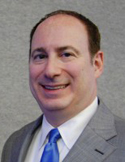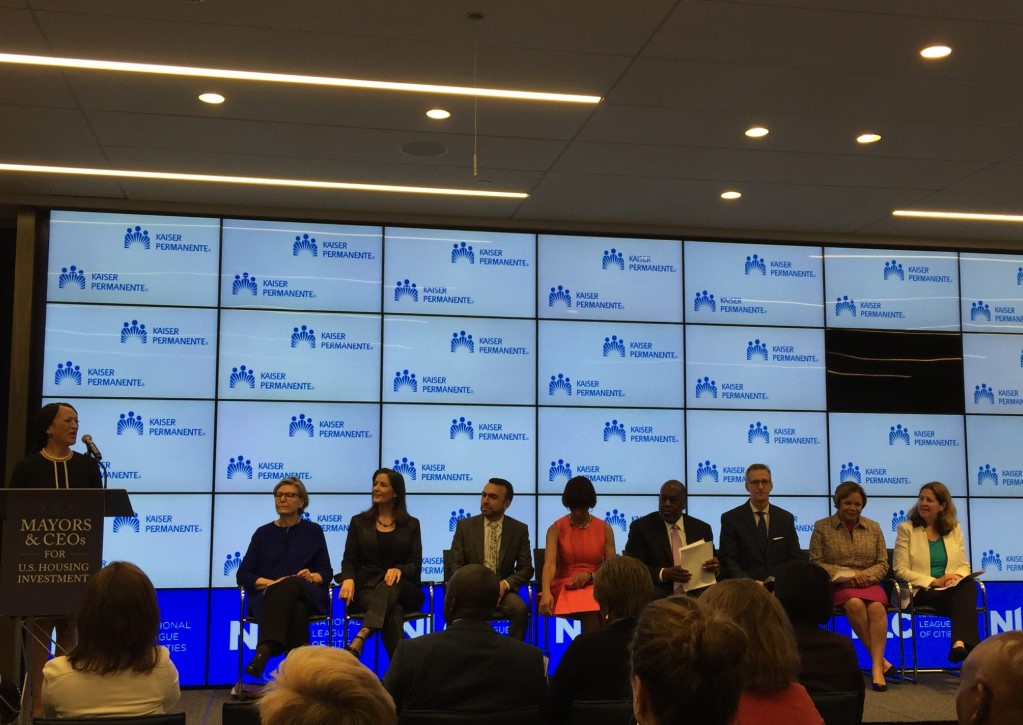World AIDS Day is Dec. 1; this year’s theme is ‘Working Together for an AIDS-Free Generation’
 Michael Horberg, MD, is Kaiser Permanente’s national director for HIV/AIDS. Appointed to Obama’s Presidential Advisory Council on HIV/AIDS in 2010, Dr. Horberg hopes to make Kaiser Permanente’s best practices a part of national policy. Practicing at Michael Reese and Northwestern Memorial hospitals in the Chicago area for 10 years before coming to California, he has spent most of his medical career in the fight against the disease. He also is chair of the board of directors of the HIV Medicine Association, an organization of 5,000 HIV clinicians in the U.S. and abroad. We caught up with him recently about his work in this field.
Michael Horberg, MD, is Kaiser Permanente’s national director for HIV/AIDS. Appointed to Obama’s Presidential Advisory Council on HIV/AIDS in 2010, Dr. Horberg hopes to make Kaiser Permanente’s best practices a part of national policy. Practicing at Michael Reese and Northwestern Memorial hospitals in the Chicago area for 10 years before coming to California, he has spent most of his medical career in the fight against the disease. He also is chair of the board of directors of the HIV Medicine Association, an organization of 5,000 HIV clinicians in the U.S. and abroad. We caught up with him recently about his work in this field.
CTH Blog:
You’ve been committed to the fight against AIDS/HIV for three decades. What has this journey been like for you?
Michael Horberg, MD:
Professionally, the journey has been extraordinarily rewarding. It has led to a career in advanced HIV care, research and advocacy, with leadership in the HIV Medicine Association, as well as previously the Gay and Lesbian Medical Association. I know I’m a better doctor because of my work in HIV — the continuing education, learning new research and new medications/treatments daily, and the phenomenal collaborations with my Kaiser Permanente colleagues.
On a personal level, the last three decades have also been quite a journey. In the early 1980s, when the first patients infected by the HIV virus were being treated, I was in my third year of medical school. I knew I was gay, but I wasn’t ready for anyone else to know that. It was the fear of rejection, the fear of being ostracized, even in the medical community, of not being able to attract any patients. Ironically, the onset of the AIDS crisis is what finally helped to liberate me. As patients with HIV symptoms, including some of my close friends, began coming to me in private practice, I realized stepping out of the closet would help them get the care they needed and allow me to be a more powerful advocate for specialized care. Furthermore, being able to help my gay and lesbian brothers and sisters fulfilled my desire to meld technical skill with compassion. Especially early in the crisis when there was a limit for what we could do for patients, really caring, really showing love was critical.
CTH Blog:
What continues to motivate you in the fight against HIV/AIDS?
MH:
It’s been more than three decades since AIDS was first reported and the statistics of the epidemic still continue to haunt me. Every day, more than 150 people in the United States become infected with HIV. That adds up to between 50,000 and 56,000 people a year – just in the United States. And racial and ethnic minorities in gay and bisexual men are disproportionately impacted by this epidemic. About half of the nation’s HIV population is African-American – yet African-Americans have a 15 percent greater chance of dying from HIV than white Americans. This is a disease of disparities.
Until we no longer have an epidemic, I will continue to be motivated.
CTH Blog:
At the International AIDS Conference Washington D.C this summer, of which Kaiser Permanente was a key sponsor, there was a lot of discussion about an AIDS-free generation. Do you think that’s possible?
MH:
Yes, there is great hope. It can be achievable, but it requires resources, increased research, and increased access to quality HIV care for all living with HIV. I am proud to support the concept of an AIDS-free generation and working towards that goal. As a leader in HIV treatment, what we are doing at Kaiser Permanente and the tools and research we can share with the world, it’s entirely possible.
CTH Blog:
How has Kaiser Permanente been a leader in HIV treatment?
MH:
Kaiser Permanente has an outstanding record of successful HIV clinical care outcomes. Our care teams have treated more than 60,000 people and have reduced disparities among its current HIV population of approximately 20,000 people by working to meet or exceed the objectives of the U.S. National HIV/AIDS Strategy. We also have an outstanding record of successful HIV clinical care outcomes. Such as:
- HIV mortality rates that are half the national average
- 94 percent median treatment adherence among KP patients that are regularly in care and on antiretroviral therapy
- No disparities among Kaiser Permanente’s African-American and Latino HIV-positive patients for both mortality and medication rates, compared to a 15 percent higher rate in the U.S. for mortality and medication
- 89 percent of Kaiser Permanente’s HIV-positive patients are in HIV-specific care within 90 days, compared to 50 percent in the U.S. within one year
- 69 percent of Kaiser Permanente’s HIV-positive patients have maximal viral control compared to 19-35 percent nationally
CTH Blog:
And how does this knowledge help other health care providers?
MH:
We started by challenging them. Earlier this year, the organization challenged all health care providers nationwide to follow its lead and improve the health equity for people living with HIV by sharing a toolkit of clinical best practices, tools, mentoring, training and health IT expertise (kp.org/hivchallenge).
We also reach out to our communities through grants. This year, Kaiser Permanente announced several grants for community organizations to continue their work on HIV/AIDS care and prevention.
In May 2012, Kaiser Permanente committed $2 million to award to eight community health organizations focusing on eliminating racial and ethnic disparities in health care and health outcomes, specifically related to HIV disease. The first four recipients will be announced later this year. Furthermore, we’ve also had significant grants in our Northern California, Southern California and Colorado regions. The organizations awarded grants were chosen specifically for having innovative approaches to preventing new HIV infections; identifying HIV positive patients sooner and connecting them with high quality HIV care; and reducing disparities among minority populations — particularly gay, African-American, youth and Latino — disproportionately impacted by HIV disease.
CTH Blog:
And we reach out to students and youth across the country as well, correct?
MH:
Yes! For more than two decades, Kaiser Permanente has been reaching out to millions of youth about HIV prevention through our Educational Theatre Program. In the early 1980s when many organizations were uneasy about talking about sexual behavior and prevention of HIV to adolescents, Kaiser Permanente wasn’t. In 1989, Kaiser Permanente’s Northern California ETP created the live production “Secrets,” aimed at educating young people about the growing epidemic. Since 1989, it’s been shown to 1.5 million youth in Northern California alone. Almost all of our theater programs, which serve communities where Kaiser Permanente is present in eight states and the District of Columbia, have adopted a production dealing with HIV prevention in one way or another. We continuously work with educators, community groups and Kaiser Permanente physicians, to update our productions to meet the needs of our communities.
CTH Blog:
World AIDS Day is just around the corner. What do you hope people reflect on Dec. 1?
MH:
I hope on World AIDS Day people reinvigorate themselves to meeting the challenge of fighting HIV. But I also hope they take the opportunity to show love — for themselves, and for those impacted by HIV. This isn’t the end, but at least we can envision the end realistically now.




